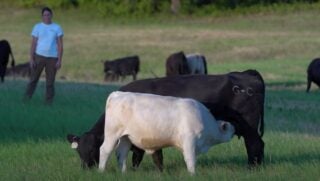Flies can negatively impact poultry flocks, causing economic loss from increased disease spread, mortality and food safety concerns. While house flies and other non-biting flies do not cause direct injury to birds, they do transfer pathogens and other bacteria onto the legs, wings and other body parts of poultry within a flock. It takes strict management strategies to help with fly control.
Producers should follow these techniques, which can be part of a well-planned Integrated Pest Management (IPM) program, to better defend their poultry operations against insect-borne threats.
Inspect the type of flies and their life cycle
The first step of a successful IPM program is to understand the types of flies that can impact an operation. According to Elanco, there are two types of flies that can cause major damage to a poultry flock: the house fly (Musca domestica Linnaeus) and the stable fly (Stomoxys calcitrans Linnaeus). The house fly is found in and around barns and feeds on waste, especially garbage and animal feces. The stable fly often attaches to the birds’ legs and belly in an effort to get a blood meal.
“The fly season varies depending on climatic conditions,” said Richard Hack, an Elanco pest management consultant. “Flies can be a year-round problem in enclosed animal housing, so it’s important that producers start an Integrated Pest Management program regularly, preferably weekly, to target flies as both adults and eggs/larvae.”
Flies pass through four life cycle stages: egg, larva, pupa, and adult fly. The lifespan of flies is approximately 15 to 30 days, but it can vary depending on environmental factors like temperature. Studies show that 80% of an insect load is due to eggs and larva and 20% of the problem is due to adults. This is also called the Silent Army Rule because for every adult observed, there are likely four eggs/larva present as well.
Manage manure, water, and moisture in the poultry house
Sanitation is an important and effective measure against flies. This includes immediately removing manure, feed, litter, broken eggs and mortality on which flies lay eggs. The litter that remains in the poultry house should be dry. To help reduce water and moisture in the poultry house, producers should make sure to manage the height of drinking systems and check water flow rates to ensure there are no leaks.
Implement fly screens or fans
Flies can also be reduced from the house with the use of screens or extraction fans. Fans with an outward flow can prevent flies from entering the poultry house. In addition, screens should be placed in windows, entrance doors and inlets.
Use chemical methods to manage resistance
An effective method to reduce fly burden is insecticides. The four basic fly control insecticides are larvicides, residual adulticides, baits and contract adulticides. Larvicides, including granule or spray, are applied to manure or high organic material to control larvae in the breeding material. Adulticides, including sprays or baits, can also be applied to control pests.
“As a proactive approach, use larvicides in breeding areas to delay and reduce adult populations,” said Hack. “Continue larvicides during the season to keep adult populations low. Producers can add residual adulticides when adult fly populations increase and use fogger treatments during fly explosions.”
According to Hack, producers should also follow these general management tips:
- Avoid unnecessary insecticide applications.
- Use monitoring efforts to know when to apply treatments.
- Use non-chemical control methods, such as sanitation and biological control agents.
- Manage untreated refuges where susceptible insects can survive.
- Use adulticides and larvicides at the same time or in sequence.
- Rotate chemical classes as well as modes of action.
Implementing an IPM program reaps a variety of benefits to poultry operations. By taking a proactive approach, producers can better reduce fly populations and avoid potential issues to their birds.


